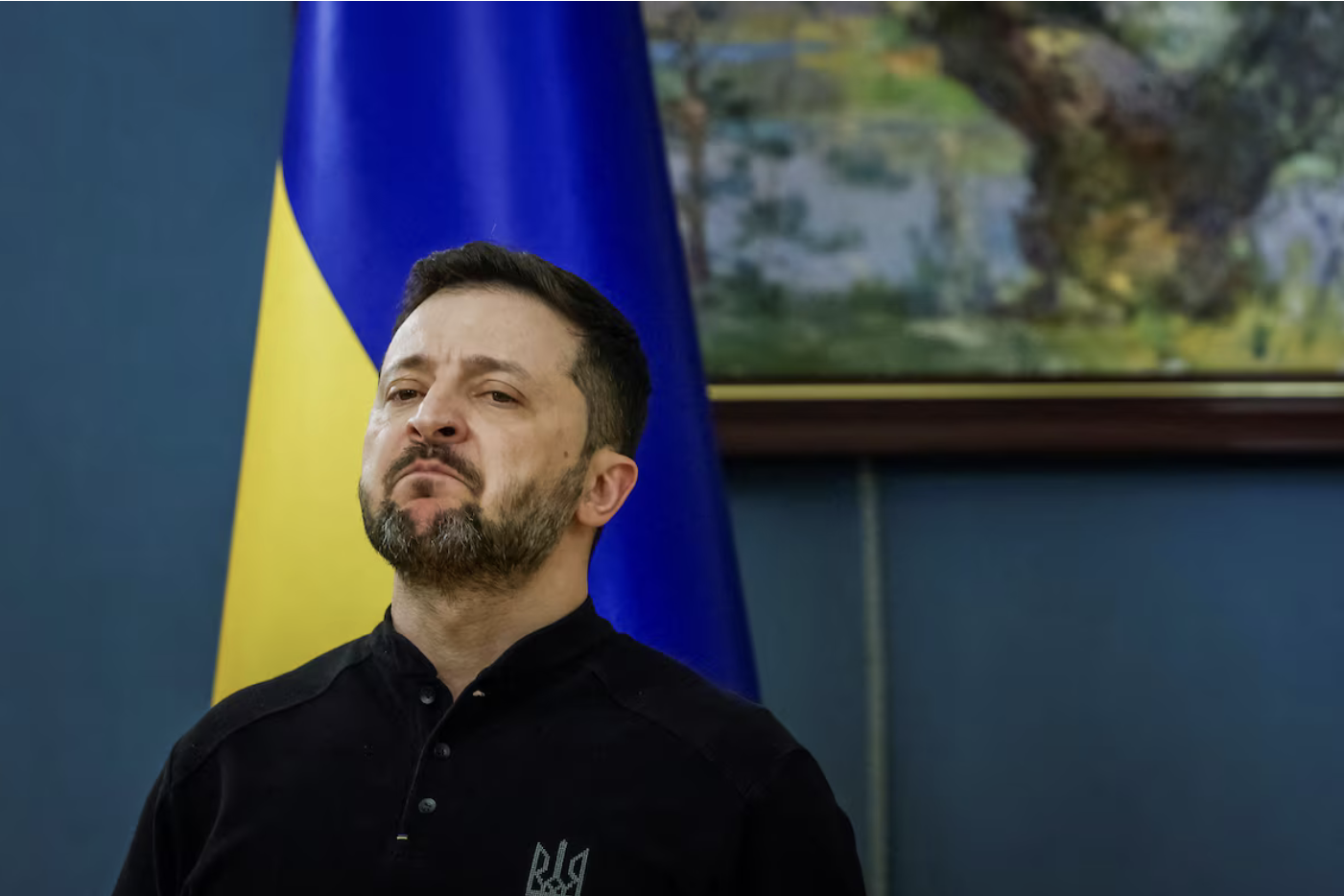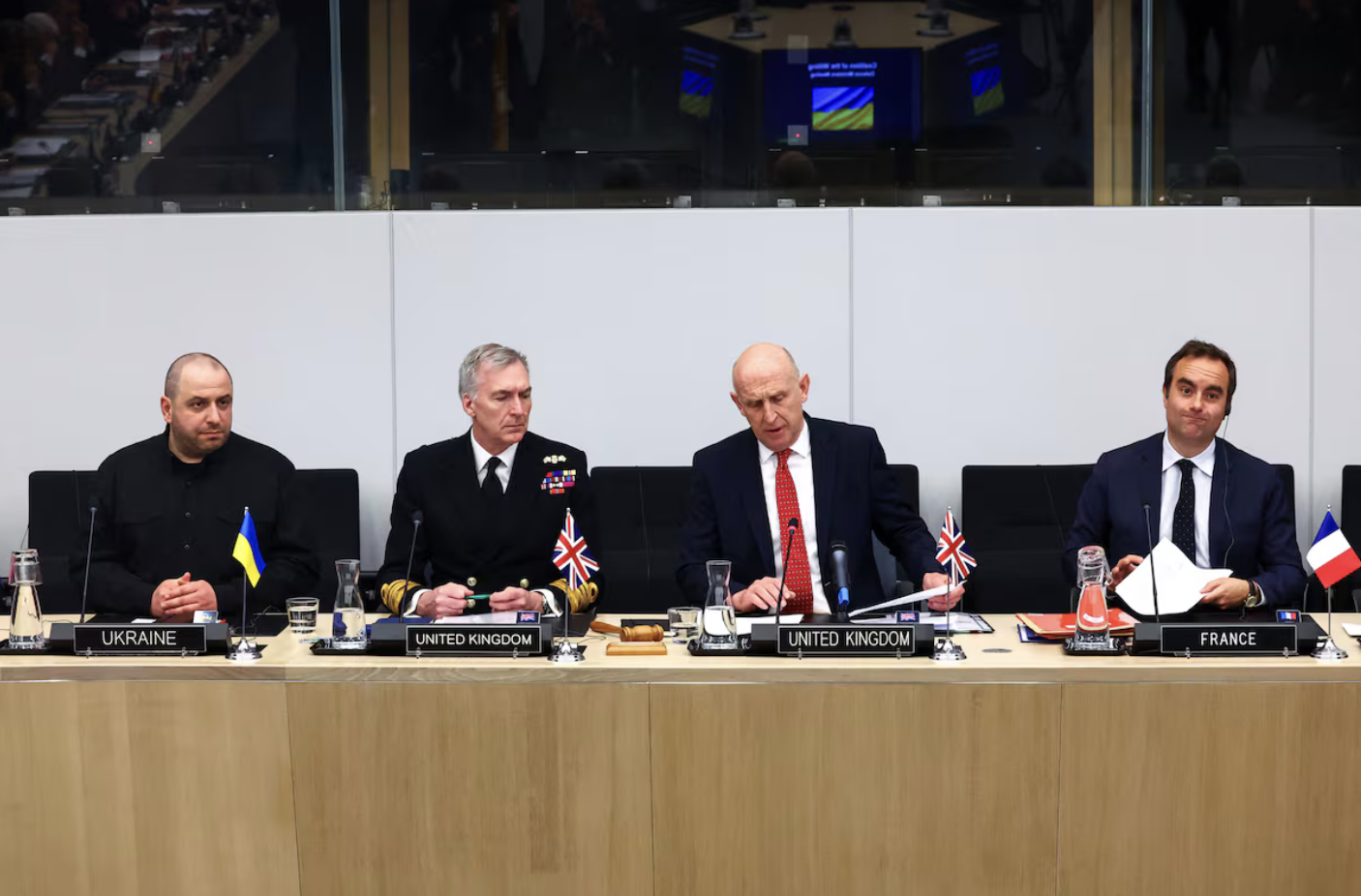Sunday, April 6, 2025, brought yet another round of Russia’s barbaric strikes on Ukrainian residential areas—this time zeroing in on Kyiv with the capital’s largest air assault in weeks. Ballistic and cruise missiles mixed with swarms of drones screamed overhead, with the attack even forcing Poland to scramble fighter jets when objects edged toward its air‑defense zone, in hopes of avoiding a repeat of the fatal Przewodów mishap in 2022. The Kyiv barrage came barely 48 hours after Friday’s strike on Kryvyi Rih that killed 19 and wounded 74; a U.N. team has since confirmed: “that a meeting of beauticians, not military personnel, had been underway at a nearby restaurant” in regards to the said attack.
On Monday, Zelenskyy publicly confirmed something I noted a few weeks ago: the Ukrainian advance into Russia’s Belgorod region. The incursion had been an open secret—OSINT (Open Source Intelligence) watchers flagged it in late March, and even The New York Times commented on the push. Zelenskyy’s messaging remains clear: these cross‑border assaults aim to “reduce pressure on other frontline sectors, particularly in Donetsk,” and, so far, that logic tracks. While Russia has clawed back a chunk of the Kursk region, Ukraine still holds a valuable buffer zone there and flatly denies Kremlin claims that it lost key settlements such as Basivka.
 Ukraine’s President Volodymyr Zelenskiy attends a press conference,
amid Russia’s attack on Ukraine, in Kyiv, Ukraine, April 4, 2025.
REUTERS/Alina Smutko/File photo
Ukraine’s President Volodymyr Zelenskiy attends a press conference,
amid Russia’s attack on Ukraine, in Kyiv, Ukraine, April 4, 2025.
REUTERS/Alina Smutko/File photo
Tuesday, the biggest story spreading across the internet was the emergence of videos and reports confirming that two Chinese nationals had been captured in Ukraine’s Donetsk region—claims that President Zelenskyy later verified personally on social media. To many, this wasn’t exactly surprising—this war has drawn in a significant number of foreign fighters on both sides, and rumors of Chinese nationals fighting for Russia have circulated for quite some time. Still, the confirmed capture is big news, as it gives Ukraine a rare opportunity to apply pressure on China—who has long claimed neutrality in the conflict while continuing to provide Moscow with economic support. What was surprising, though, was Trump taking the risk of upsetting his friends in the Kremlin—publicly stating, “I’m not happy about what’s going on with the bombing because they’re bombing like crazy right now. They’re bombing — I don’t know what’s happening there,” in reference to the Sunday strike on Kyiv and the earlier attack on Kryvyi Rih that killed nine children. Not exactly strong words from our fearless leader, but hey—I'm honestly surprised he said anything at all.
On Wednesday, Russia decided to respond to Trump’s weak hand-wringing the way one might expect: by stepping up offensive operations across nearly every front line in Ukraine. Fighting intensified near Pokrovsk and along the border of Dnipropetrovsk, with Ukrainian officials warning that Putin’s troops are pushing for a symbolic foothold in a new region. It’s unclear whether this is the start of the long-feared spring offensive or just more of Russia’s standard meat-grinder tactics, but either way, the message is clear—they’re not particularly worried about upsetting Trump. Zelenskyy, meanwhile, focused on the Chinese nationals, doubling down on his claim that over 150 Chinese nationals are actively fighting for Russia. President Zelenskyy began sharing footage of captured fighters and calling it further proof that Beijing, while not directly deploying troops, is at least aware of the situation of which Beijing outright dismissed the entire claim as groundless.
Thursday saw the regathering of the so-called Coalition of the Willing—the same 30 countries that have been popping up in these weekly summaries—this time convening in Brussels to discuss the proposed “Reassurance Force.” The plan, as it stands, would see primarily UK and French troops deployed to secure parts of Ukraine in the event a peace deal is actually reached—an outcome still nowhere in sight. European defense ministers stressed the force would be designed to deter future Russian aggression, but also admitted that major questions remain: what the mission actually entails, where troops would be stationed, and whether the U.S. plans to help at all. Trump, as usual, has declined to offer any commitments beyond vague encouragement. European officials are trying to show they’re “ready to step up,” but without American logistical and intelligence support, it’s unclear whether this is a serious security plan.
 Britain’s Defence Secretary John Healey, Britain’s Chief of the Defence
Staff Admiral Tony Radakin, Ukrainian Defence Minister Rustem Umerov and
France’s Defence Minister Sebastien Lecornu attend a meeting of the
Coalition of the Willing in defence ministers format, hosted by the
United Kingdom and France, at NATO headquarters in Brussels, Belgium
April 10, 2025. REUTERS/Yves Herman
Britain’s Defence Secretary John Healey, Britain’s Chief of the Defence
Staff Admiral Tony Radakin, Ukrainian Defence Minister Rustem Umerov and
France’s Defence Minister Sebastien Lecornu attend a meeting of the
Coalition of the Willing in defence ministers format, hosted by the
United Kingdom and France, at NATO headquarters in Brussels, Belgium
April 10, 2025. REUTERS/Yves Herman
On Friday, April 11, 2025, Donald Trump’s special envoy, Steve Witkoff, met with Russian President Vladimir Putin in St. Petersburg for over four hours to discuss the possibility of a ceasefire. Despite the lengthy in-person meeting—and the series of awkward hand gestures Witkoff offered up—no real breakthrough occurred, and so far, there’s nothing concrete to show for it. The talks seemed more like an optics play than a serious negotiation, with both sides maintaining their usual vagueness. The lack of progress even forced Trump to take to social media once again—only this time, rather than offering any real criticism of Putin, he defaulted back to his usual narrative: that the war wasn’t Russia’s fault, but somehow the result of U.S. failures and everyone else’s mistakes. In some good news though, Ukrainian forces near Pokrovsk reported they’ve not only held the line but are now actively pushing Russian troops back—marking a rare momentum shift in what has been a grinding, nine-month-long battle for the key logistics hub. As one battalion commander put it: “Are we holding them? We are. Are we pushing them? We are pushing. Are we advancing? We are.” It’s not a victory yet, but after weeks of diplomatic deadlock and drone strikes, it’s at least a step in the right direction.
Russia capped off the week with another overnight drone barrage, launching 88 drones across Ukraine and injuring four people, including three in Kyiv. While Ukrainian air defenses shot down 56 and jammed another 24, the strikes and remnants still managed to destroy homes and ignite fires in multiple cities—including Kyiv, Kharkiv, and Dnipro. The timing couldn’t be more on-brand: just a day after Trump’s envoy left Moscow with no deal in hand, Russian and Ukrainian officials showed up at a conference in Turkey and spent the day accusing each other of violating the so-called 30-day limited ceasefire. Russia, naturally, claims it's been on its best behavior while sharing “evidence” of 60 Ukrainian infractions with U.S. and Turkish officials. Ukraine fired back with its own stats: over 2,200 exploding drones, 70 missiles, and 6,000 guided bombs launched by Russia—since the limited ceasefire began.